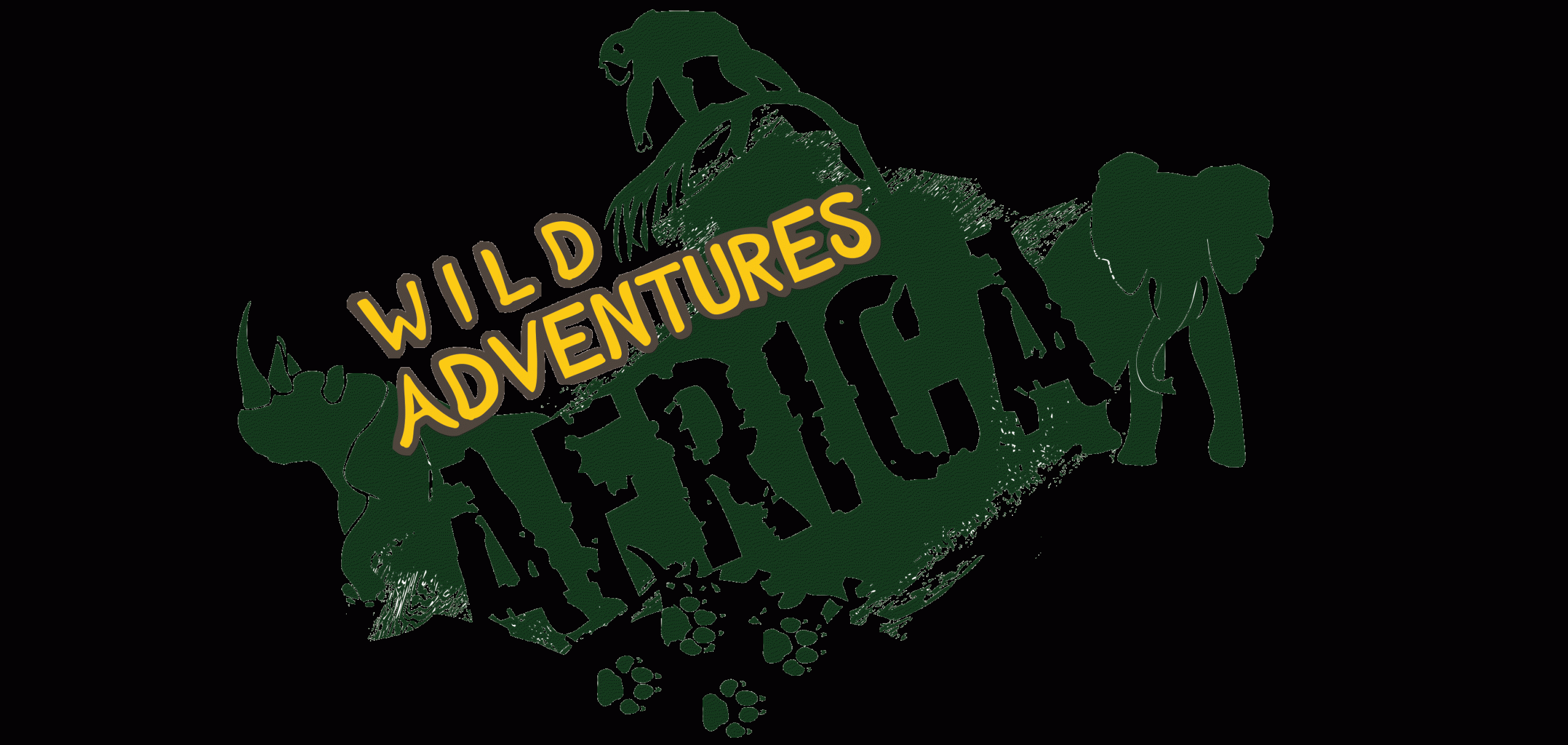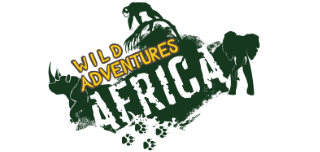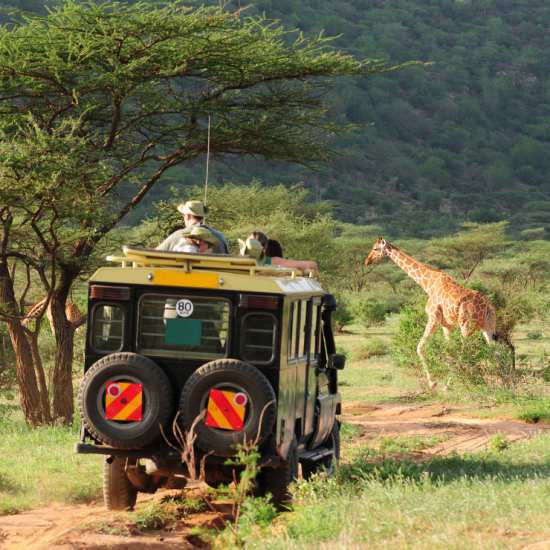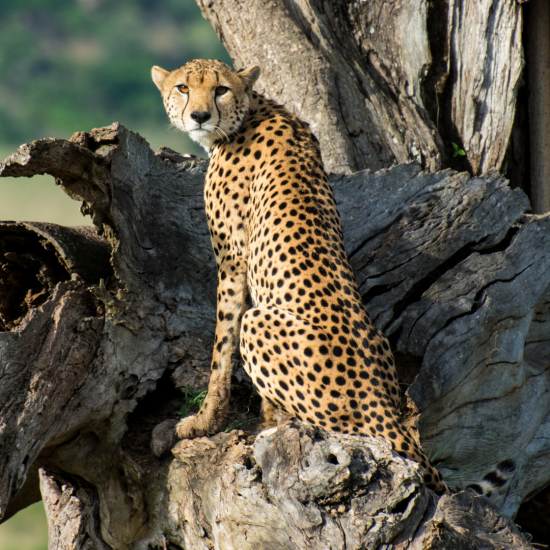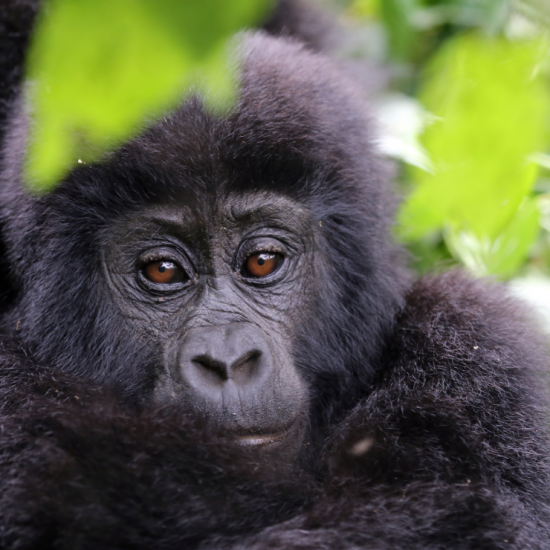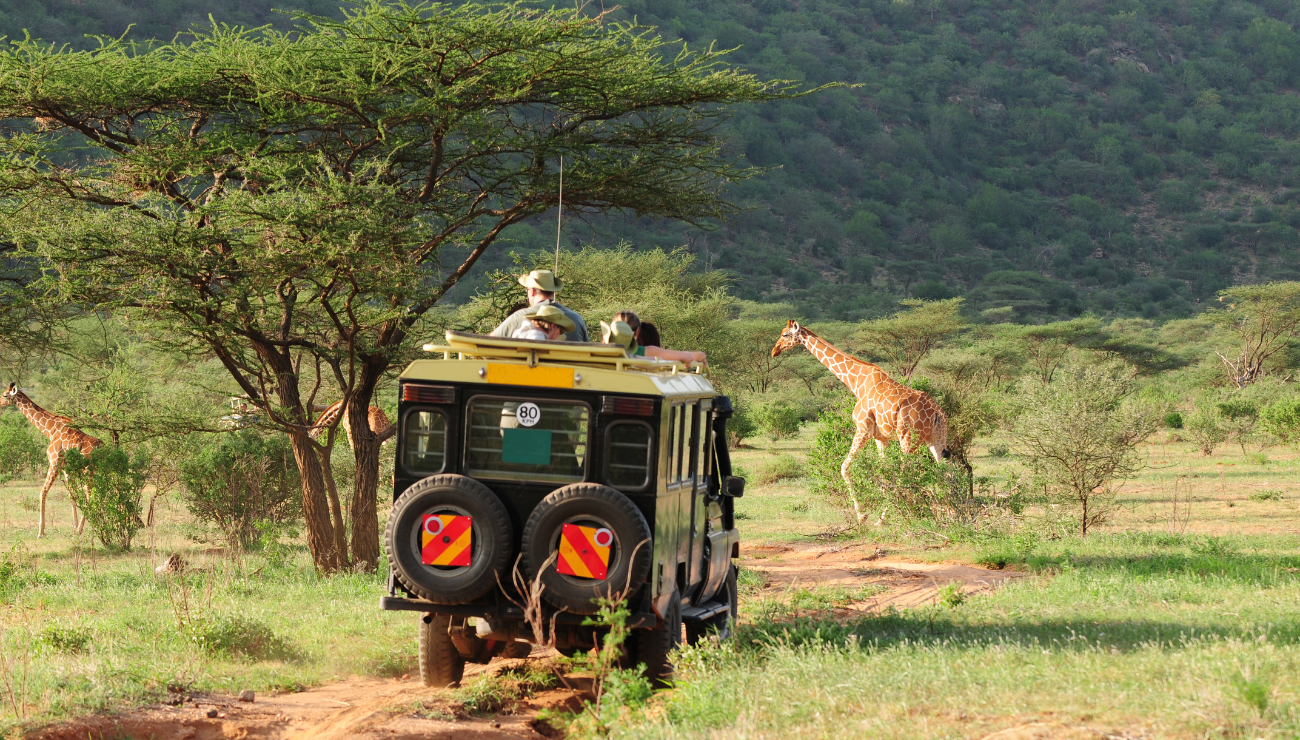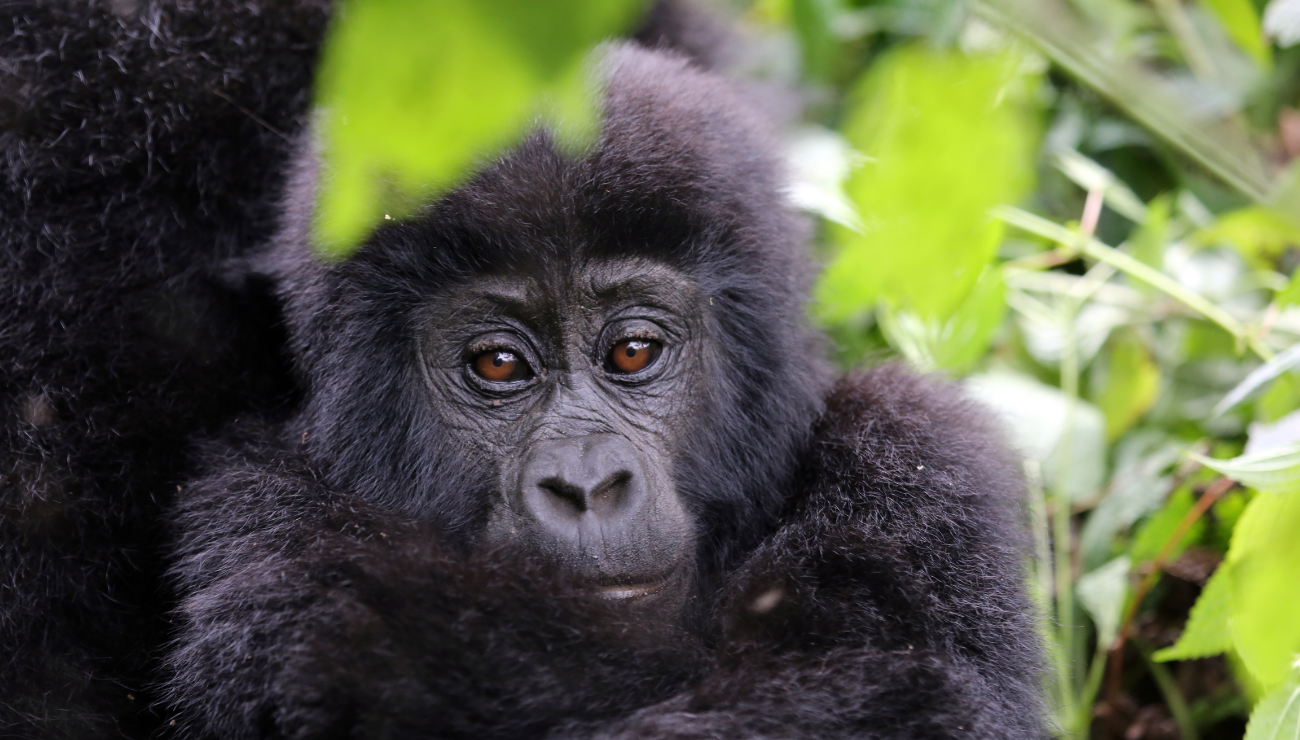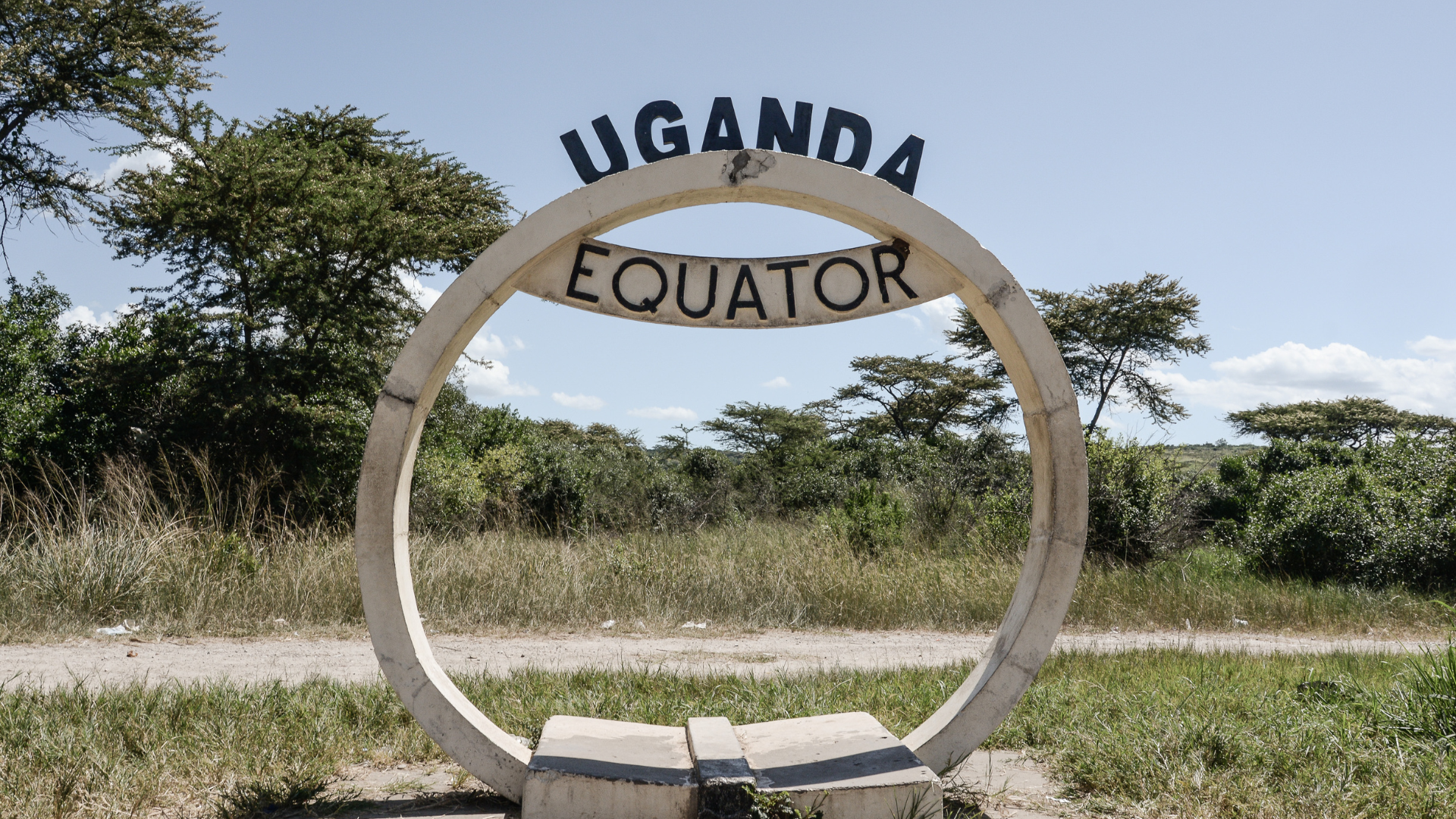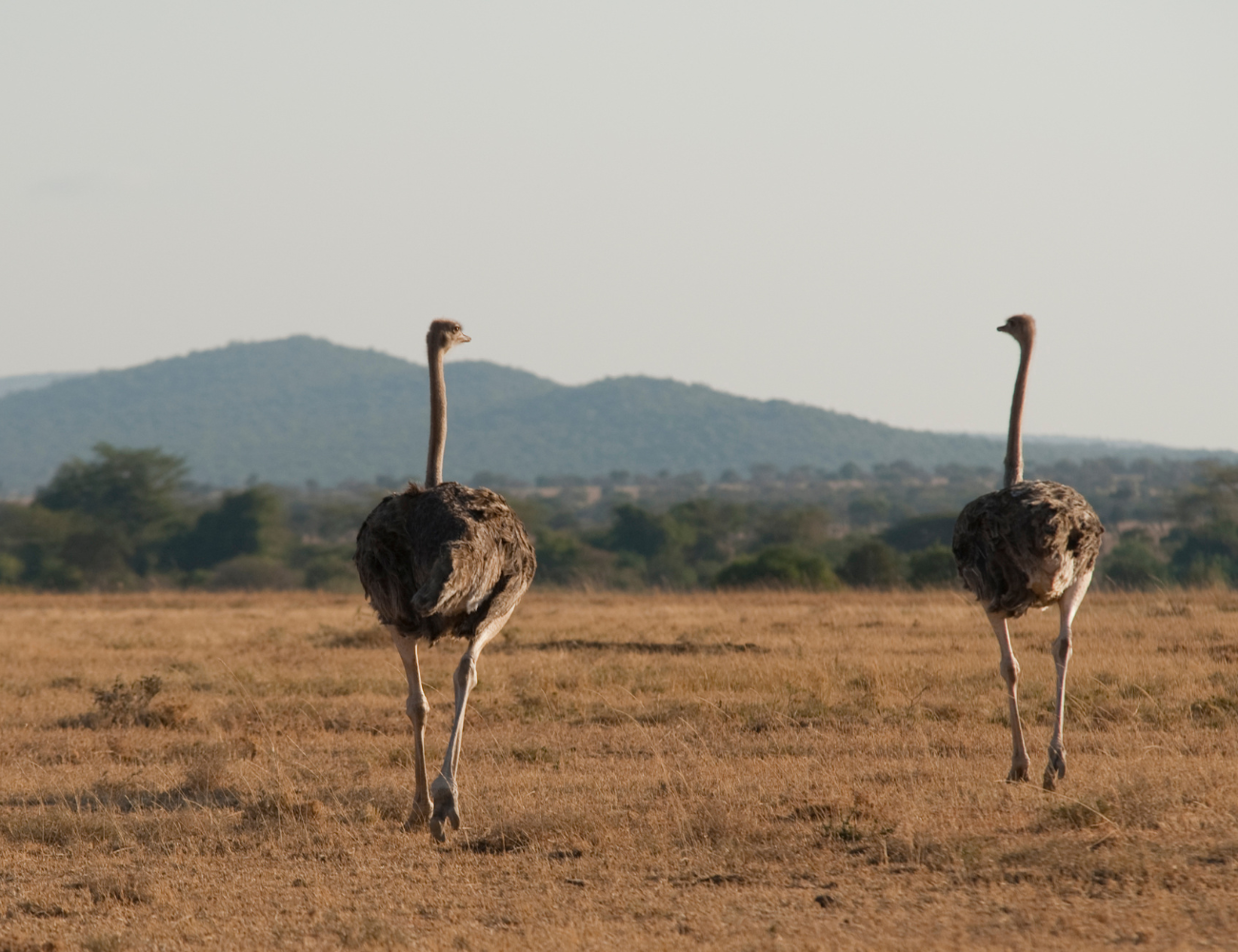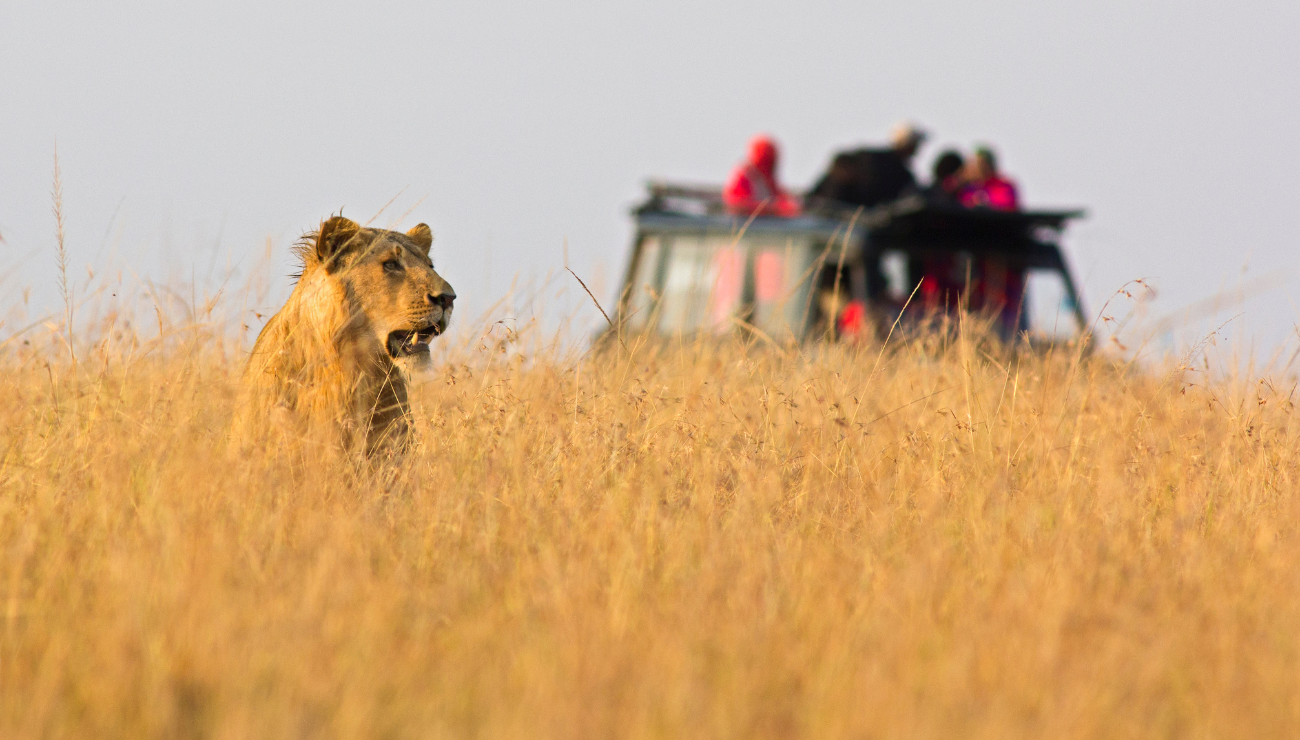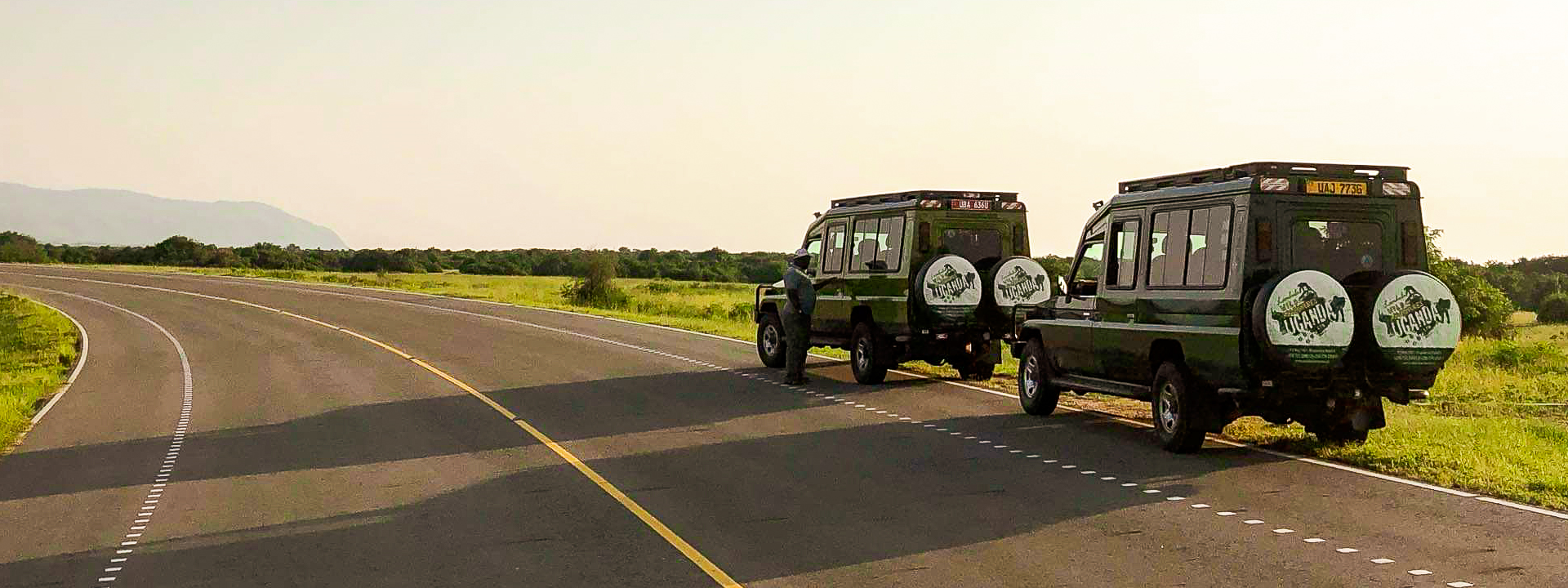Requirement Profile
This trip to Uganda is aimed at an upbeat, uncomplicated audience of all ages. Flexibility and a willingness to compromise are important, and there should be an understanding that Swiss precision and our sense of time do not fit into the lives of the locals in Uganda.
The hike in the steep Bwindi forest requires a certain steadiness, as we will spend about four hours in the jungle searching for the mountain gorillas. The search for chimpanzees is somewhat easier. The trail network in Kaniyo Pabidi and Kibale is better developed and the forests are flatter. Both gorilla and chimpanzee tracking usually involve moving through underbrush, not just on narrow forest paths.
A certain level of travel tolerance is advisable, as road conditions, especially in wet weather, can be adventurous, and we will spend a lot of time and travel long distances by car.
Accommodation/Transport/Meals
Overnight stays are generally in good to very good lodges - by Ugandan standards - and in beautiful surroundings. However, facilities and service in Uganda are often not at the level one is used to from Western destinations. In return, one travels in a country still largely untouched by mass tourism.
The road conditions in Uganda require 4x4 vehicles. We travel in 4x4 Land Cruisers. All guests have a guaranteed window seat (six per vehicle or four per vehicle).
Full board is included during the trip. Meals can also be taken as a picnic along the way. Drinks are to be paid for separately; however, we will always have water in the car.
Insurance
Cancellation insurance is advisable. We recommend taking out travel insurance for a year. If you are interested in insurance, please contact us.
Formalities/Entry for Swiss
Valid passport, which must be valid for at least 6 months beyond the return travel date, as well as a visa. The visa can be obtained on arrival, or as an e-visa online at
https://visas.immigration.go.ug/ (visa cost currently USD 50), or it can be applied for at Ugandan representations abroad.
Vaccinations/Health
Yellow fever vaccination is mandatory and will be checked upon arrival in Uganda (vaccination booklet). The following vaccinations are recommended: diphtheria, tetanus, poliomyelitis, measles, and hepatitis A.
Malaria: Malaria prophylaxis is recommended. The malaria risk exists throughout the year in risk areas. It is advisable to protect against mosquito bites. In risk areas, one should sleep under a mosquito net at night.
For more information and updates, please visit
www.safetravel.ch or consult a tropical doctor.
Location
The Republic of Uganda is a landlocked country located in East Africa between the 29th and 35th meridians east and the fourth northern and first southern latitudes. Thus, the equator runs through Uganda. To the east, Uganda borders Kenya, to the north South Sudan, to the south Tanzania (Victoria Lake) and Rwanda, and to the west the Democratic Republic of Congo. Uganda is predominantly situated on a high plateau at 1,000 meters; hence, the climate is very pleasant.
Population
Population: 41.58 million (estimate 2020)
The capital is Kampala.
Age structure: 0-14 years: 50.4%, 15-64 years: 47.1%, 65 years and older: 2.5%.
Over 40 ethnic groups live together in Uganda, each with their own languages, cultures, customs, and sometimes their own religions. More than half of the population – a total of 60 percent – are Bantu, mainly living in the areas south and west of Lake Kioga. The largest Bantu group are the Baganda, who make up 16.9% of the population, followed by the Ankole and the Basoga with 8.4%. Numerically smaller Bantu peoples include the Bakiga with 6.9%, the Bagisu with 4.6%, and the Banyoro with 2.7%, as well as the Batoro, the Bagwere, the Bakonjo, the Banjaruanda, and the Rundi. In the central north, Nilotes, mainly Langi with 6.1% and Acholi with 4.7% of the population, live alongside the Alur and Jopodhola; in total, the Nilotic peoples make up 15% of the population. The share of Hamitic Nilotes, mainly the Iteso with 6.4% and the Karamojong, is equally large. Together, Nilotes and Hamitic Nilotes constitute 24% of the population. In the north, 7% of the population speaks Sudanese languages, the largest of which – with 4.2% of the total population – are the Lugbara. A very small minority are the Ik, representing 0.02% of the total population. The proportion of non-Africans is low at 0.98% - Asians at 0.82%, Europeans at 0.10%, and Arabs at 0.07%.
Language
English and Swahili have been the two official languages since the constitutional amendment of September 2005. Swahili is effectively the command language of the police and military but is otherwise little used in civilian administration.
In addition, Luganda - the language of the Baganda ethnic group - is the official language of the autonomous Kingdom of Buganda in central Uganda, which has existed since pre-colonial times. However, in everyday life, the national languages are used, such as other languages of the Niger-Congo language area, as well as Nilo-Saharan languages, and to a lesser extent Arabic. Some of them are official languages of the African Great Lakes kingdoms.
Time Difference
Central European Time (CET) +2 hours During European summer time, the time difference is +1 hour
Electricity
240 volts alternating current, 50 Hertz (very high voltage fluctuations!). Power outages occur even in the capital and are common in smaller towns. In villages, there is usually no electricity. The lodges in the parks often have generators for charging cameras and mobile phones. No adapter is needed for 2-pin plugs, but a British adapter is needed for 3-pin plugs.
Mail
Mail should only be sent by airmail. There is no home mail delivery, so P.O. BOX numbers must be used. Postcards should be dropped off at post offices.
Telephone/Mobile Phones
The dialing code from Germany, Austria, and Switzerland to Uganda is 00256, from Uganda to Germany 0049, to Austria 0043, and to Switzerland 0041. Calling from hotels is very expensive. It is best to buy a SIM card and then top up with call credit (Airtime). SIM cards can be obtained very cheaply at various telephone provider shops. Airtime is available almost everywhere in small shops, gas stations, and even from street vendors. Simple mobile phones can be bought cheaply in shops (from 15 francs). Telephone providers with good mobile networks: Orange, MTN, Airtel, UTL.
Internet
Country code: .ug Internet cafes are available in all larger towns. Internet access is also possible from larger hotels. If you have a laptop, you can also buy a SIM card modem (about 40 francs) and a SIM card/Airtime, then you can access the internet wherever you have good mobile reception. Many cafes and restaurants in Kampala/Entebbe offer wireless (sometimes free, sometimes for a small fee), so you can also go online with a smartphone.
Holidays
January 1 (New Year's Day), January 26 (Liberation Day), March 8 (International Women's Day), Good Friday, Easter Monday, May 1 (Labor Day), June 3 (Martyrs' Day), June 9 (Heroes' Day), October 9 (Independence Day), December 25 (Christmas), December 26 (Boxing Day). There is no vacation season in Uganda. The Ugandan school holidays are roughly in March/April, August, and December. However, this does not affect business life.
Opening Hours
Banks: Mon to Fri 08 - 14 hrs, closed on Saturdays/Sundays; however, there are also banks that open and close later, some are also open on Saturdays.
Post: Mon to Fri 08:30 - 18 hrs, Sat 08:30 - 14 hrs;
Offices and authorities: generally Mon to Fri 08 - 17 hrs, lunch break 12:45 - 14 hrs;
Shops: Mon to Fri mostly 08 - 18 hrs, Sat 09 - 14 hrs. However, many, especially smaller shops, are open daily until late in the evening and also on Sundays.
Clothing
One should have light, breathable, and easily washable summer clothing all year round. For the evenings and cool mornings, it's also advisable to take light wool or fleece items. In higher altitudes (such as Bwindi Impenetrable National Park and the Kabale region), it can be very cool in the evenings and mornings, sometimes around 10°C. For excursions in national parks, good footwear and long-sleeved clothing are necessary if you are walking (chimp tracking, foot safaris). Otherwise, it is more comfortable on game drives to wear shorts and sandals. Caution is advised when leaving the car due to the thorny flora. Rain protection, sun hat, sunglasses, and sunscreen are essentials in your travel luggage. For gorilla and chimpanzee tracking, in addition to tear-resistant trousers, one should also wear long socks and good footwear. It is advised to pull the socks over the trouser legs to protect against ants.
History/Politics
From 500 to 1400 AD, settlers spread in eastern Uganda. In the 14th century, the Kingdom of Buganda emerged in the area of present-day Kampala following the subjugation of Bantu tribes. At the end of the 17th century, various kingdoms united to form the Buganda Kingdom. In the mid-19th century, the first trade relationships with Arab traders began. In 1862, the sources of the White Nile were discovered. Between 1877 and 1894, Protestant and Catholic missionaries arrived in Buganda and fiercely competed. In 1894, Buganda became a British protectorate. Uganda gained independence in 1962. In 1971, Idi Amin took power in a coup. Under him, the Asian leadership of the country was expelled, and about 500,000 people died in military conflicts. Amin was overthrown in 1979. In 1995, Uganda received a new constitution after free elections.
Economy
Uganda has developed well again thanks to international aid after its foundation was destroyed by civil war and mismanagement. Over 80% of the population is engaged in agriculture. In addition to crops for self-sufficiency, coffee, cotton, tobacco, and tea are primarily grown. The country has oil reserves in the Lake Albert region, as well as copper, cobalt, limestone, and salt. Despite good successes, there is widespread poverty, largely due to corrupt politicians and officials. Tourism is still in the early stages of development but has good prospects.
Religion
About 85% of Uganda's total population are Christians. The majority align with the Roman Catholic Church (42%) or the Anglican Church (36%). Approximately 12% of Ugandans are mostly Sunni Muslims. About 1% of the population follows traditional African religions.
Geography
Uganda is characterized by lakes, the White Nile (here: Victoria Nile and Albert Nile), rainforests, and savannas. The equator runs through the south of the country. Uganda's lowest point is the lower course of the Albert Nile at about 610 m above sea level (Lake Albert: 621 m above sea level). The highest point, Margherita Peak in the Rwenzori Mountains, is at 5,109 m. Both extremes are relatively close to each other.
The total area of the country is 241,038 km², of which 199,710 km² is land and 36,330 km² is water. The northeast of Uganda is semi-arid.
Climate
Uganda is mostly situated on a plateau about 1,000 m above sea level. This mitigates the tropical climate in the south and middle of the country: The climate is tropically warm but significantly cooled due to the altitude. Therefore, it is neither excessively hot nor particularly cold. Temperatures fluctuate between 25 and 30°C during the day, and it is usually around 17°C to 19°C at night. The extreme values are between 10 and 35°C. The rainfall (1,000–1,500 mm) used to be distributed throughout the year, with only two drier periods (December to February and June to August). However, there are now regions in Uganda, especially in the north, where it does not rain for years, while the rest of the formerly tropically humid country is increasingly dependent on the monsoon and only has one rainy season. In the rainy season, it usually rains for a short time, but often heavily, for a few hours. Therefore, Uganda can be visited all year round.
Flora and Fauna
Uganda has an extremely diverse plant and animal life. The savannah of East Africa transitions into the rainforest of Central Africa, positively affecting the biodiversity of plants and animals. The original fauna is best preserved in the national parks. The two most important conservation areas are Murchison Falls National Park and Queen Elizabeth National Park. There are also Kidepo National Park, Kibale National Park, Lake Mburo National Park, Semuliki National Park, Mount Elgon National Park, Bwindi Impenetrable National Park, Mount Rwenzori National Park, and Mgahinga Gorilla National Park. All parks can be visited. In most parks, you can go on game drives and observe a wide range of African wildlife. Most national parks are located in the west of the country, in or on the edge of the Albertine Rift Valley.
The Albertine Rift Valley is considered one of the biodiversity hotspots of our planet, so there are particularly many different animal species in the parks located there. Unique to Uganda is the Uganda Kob (Kobus thomasi), a species of antelope from the genus of waterbucks and one of Uganda's two national animals. The second national animal, the graceful Grey Crowned Crane, is still frequently seen around Lake Victoria, but also in national parks like Murchison Falls and Queen Elizabeth. There is also an endemic primate species in Uganda, the Uganda Mangabey (Lophocebus ugandae). This primate species from the family of Old World monkeys (Cercopithecidae) was long considered a subspecies of the Grey-cheeked Mangabey and was elevated to species status in 2007.
Some notable animal species include elephants, lions, cheetahs, leopards, hyenas, Cape buffaloes, giraffes, hartebeests, impalas, and other antelope species, zebras, warthogs, and klipspringers.
Food and Drink
Cornmeal porridge (in Swahili Ugali, in Luganda Poscho) and rice or potatoes are often the staple foods. They are usually accompanied by fish, meat, or chicken. Cassava (manioc), beans, cabbage, and matoke (cooking bananas) are also common. Mandazis (doughnuts), chapatis (thin flatbreads made from cornmeal and water), samosas (pastry filled with vegetables or meat), Rolex (egg pancakes with tomatoes and onions rolled into a chapati), and hard-boiled eggs are typical African snacks and are widely available at street stalls. Grilled meat skewers are also popular.
The fish selection mainly includes the delicious tilapia cichlids, common in almost all lakes. Beef and pork are often somewhat tough as the meat cannot be hung due to the lack of cool storage. The same applies to goat meat. Chicken is similarly expensive as other meats and often consists mostly of skin and bones.
However, in the lodges of the national parks, you usually get very good dishes. Tropical vegetables are of the best quality and available at reasonable prices in every market.
The local beers brewed in Uganda are excellent. The most famous are "Nile Special" and "Club Pilsener". Tap water should be avoided for health reasons! Water should only be purchased in bottles. Tea and canned soft drinks are available everywhere.
Currency and Currency Regulations
Currency: Ugandan Shilling (U.Sh. or UGX)
Exchange recommendation: in the country of travel.
Exchange: It is recommended to bring US dollars (USD), which can be easily exchanged, provided they are new notes (from 2009) and are not scribbled on. Note that exchanging a 100-dollar bill often gets a better exchange rate than exchanging five 20-dollar bills. The larger the bill, the better the exchange rate. However, it is good to have smaller dollar bills for tips or small purchases in lodges.
Ugandan banknotes come in denominations of 50,000, 20,000, 10,000, 5,000, and 1,000 UGX. Coins are issued in denominations of 1,000, 500, 200, 100, 50, and 10 UGX.
International credit cards: Yes – They are mainly accepted at large restaurants, hotels, airlines, and some tour operators. A surcharge for payment by credit card, amounting to several percent of the total amount, is common in many places.
ATM: Yes – Cash can be withdrawn from ATMs of various banks using a VISA card. MasterCard does NOT work at ATMs. In some cases, cash can also be withdrawn using an EC card or a Postfinance card. The limit for cash withdrawals varies depending on the bank and location (usually between 500,000 and 2,000,000 UGX per day) and also depends on whether the ATMs are filled.
Traveler's checks: Yes – Traveler's checks can be exchanged at banks in larger cities (often at less favorable rates than for cash).
Best Time to Travel
The most popular travel times are between January and February and from July to September. Peak season in Uganda is from December to February and June to August. Nevertheless, Uganda can be visited comfortably throughout the year. In the rainier months, the roads are partly very slippery, but the light and visibility are better. During the popular travel times, the roads are often dusty, and there is constantly a fine dust haze in the air. The road conditions have changed enormously in the last 5 years; many of the former dirt roads are now paved.
Safety
Uganda is considered one of the safest countries in East Africa, and the security situation is better than in Kenya. The rebels in the north (Lord’s Resistance Army) have not been in Uganda since 2006. The current travel advisories from the FDFA (Federal Department of Foreign Affairs) can be found at
www.eda.admin.ch.

